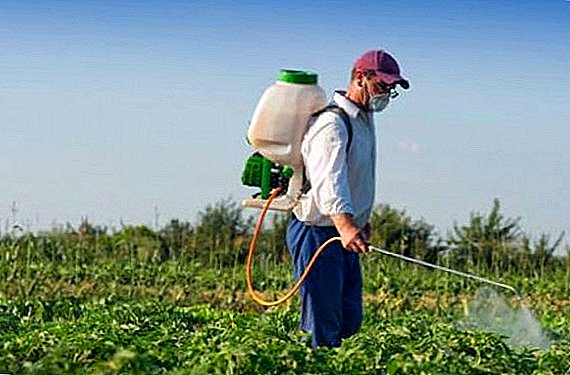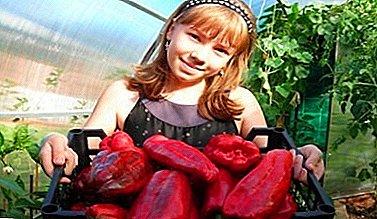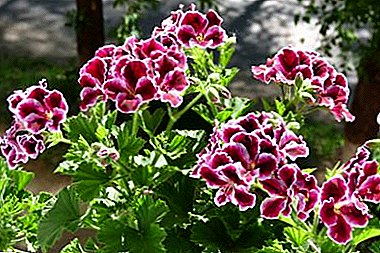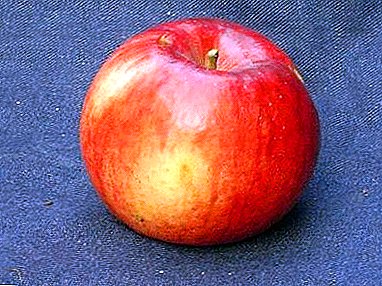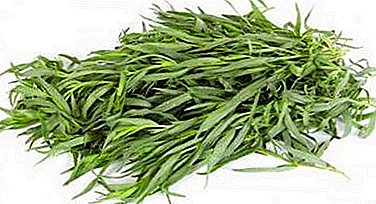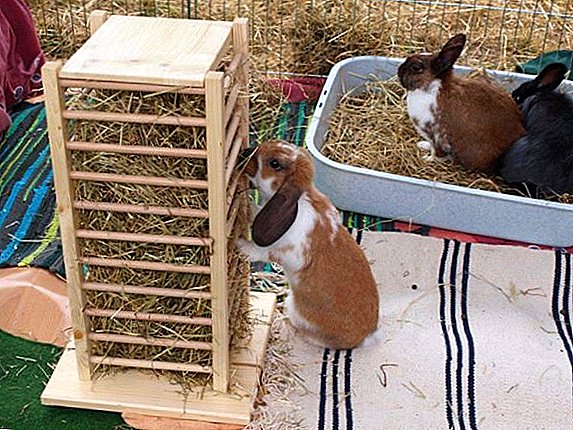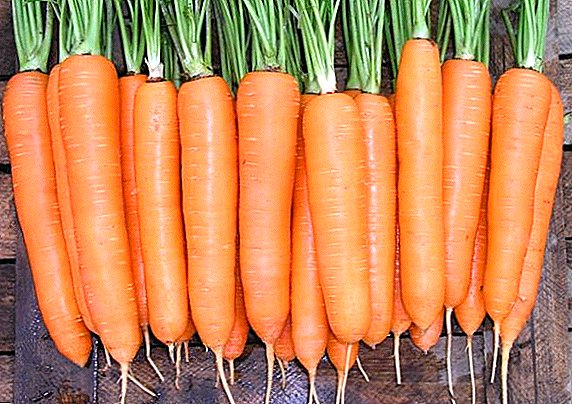 Carrot "Nantes" - almost 80-year-old patriarch, who has proven himself in the spaces of the former Soviet Union. The variety was obtained by Soviet breeders in the 40s of the last century. This carrot was planted in the south of Krasnodar and in the beds of the Irkutsk region - and everywhere it pleased the gardeners with constant yield. I would like to take a closer look at the whole process of growing carrots "Nantes", starting with the sowing of seeds and ending with the harvest.
Carrot "Nantes" - almost 80-year-old patriarch, who has proven himself in the spaces of the former Soviet Union. The variety was obtained by Soviet breeders in the 40s of the last century. This carrot was planted in the south of Krasnodar and in the beds of the Irkutsk region - and everywhere it pleased the gardeners with constant yield. I would like to take a closer look at the whole process of growing carrots "Nantes", starting with the sowing of seeds and ending with the harvest.
Description and characteristics of the variety
"Nantes" is already a classic form of carrots. Its name has long become a household name for describing many other varieties of carrots: the shape and yield of early and mid-season varieties.  If they talk about a carrot, which is similar to the "Nantes", then it is immediately clear that this is an orange, elongated, even root crop of a cylindrical shape with a rounded tip.
If they talk about a carrot, which is similar to the "Nantes", then it is immediately clear that this is an orange, elongated, even root crop of a cylindrical shape with a rounded tip.
Did you know? Wild carrot is a native native of Afghanistan. There she was a wild multicolored (purple, white or yellow) field root. The now popular orange carrot was brought out by scientists of the Netherlands as a result of directed selection. Its coloring symbolizes the Royal Oranian Dynasty of the Netherlands, whose dynastic color is orange.
Characteristics of carrots:
- root crop orange-red color;
- exactly conical shape with a blunt tip;
- weight 100-160 g, length 13-15 cm;
- early or medium early.
 Judging by the output of the first product, the variety is early ripe, since it takes 50-55 days from the first carrot shoots to the first commercial root crops. But the full ripeness of "Nantes" comes in 90-120 days.
Judging by the output of the first product, the variety is early ripe, since it takes 50-55 days from the first carrot shoots to the first commercial root crops. But the full ripeness of "Nantes" comes in 90-120 days.This allows the plant to be attributed to the mid-early varieties.
The taste of the root of this variety is the reference taste of carrots with elastic, sweet flesh. Vegetable can be stored for a long time when laying in the cellar (for winter storage).
Familiarize yourself with such representatives of carrots as black carrots, "Samson", "Shantase 2461".One of the disadvantages of a root crop is that a good harvest of conditioned fruits of this variety can be obtained only on fertile, loose soils.
Carrot "Nantes" is used:
- fresh;
- for cooking soups and borscht;
- for conservation;
- for various salads and marinades;
- for making juices and baby food.

Planting seeds and growing features
Carrots grow well in sunny areas. If you sow carrots in the shade or partial shade - the seedlings will be elongated, pale, and the grown roots will not gain good weight.
Did you know? Carrots included in the diet have a positive effect on the blood: lowers cholesterol and raises the calcium content. It is especially useful for people with hereditary cardiovascular diseases. Carotene contained in carrots has a beneficial effect on visual acuity. Daily eaten carrots will help the body to cope with overloads in the work of the heart and blood vessels.Before sowing carrots, a gardener needs to consider which plants grew on this bed last season.
In no case carrot can not be planted for several years in the same place.
Compliance with crop rotation will allow you to get a good harvest of carrots. 
Carrots grow poorly after such predecessors:
- parsnip and dill;
- parsley and celery.
At the same time, the carrot feels great on the beds, where it grew before:
- tomatoes and cabbage;
- garlic and onions;
- cucumbers and potatoes.
Since the variety quickly forms roots, it can be sown twice per season. The first sowing of carrots is carried out in early spring (at the end of March or in early April).
Did you know? If a person eats a lot of carrots, his skin color will change and become close to orange. Knowing this property of the root, employees of zoos feed a large number of carrots to pink flamingos, which allows the birds to keep the unusual color of feathers. Among the numerous feline breeds there is a breed of animals with a red-colored ears and tail. In order for the color to be bright and constant, grated carrots are included in cat food (10-15 g)The second sowing can be carried out in the second half of July, and the crop will ripen before the onset of frost.

To get the spring early harvest, carrots "Nantes" can be sown before winter:
- in November, choose dry weather and prepare the bed under the carrot;
- soil is loosened, mark furrows for sowing with a marker;
- carrot seeds mixed with sand (1: 1) are sparsely sown in furrows and covered with soil.
As soon as the first carrot shoots appear in the spring in the garden - the aisle needs to be loosened.
This will give oxygen access to the roots of the seedlings and clean the inter-rows from small weeds. Podzimnaya carrot ripen by the end of May.  Before sowing carrot seeds in the ground, you need to calibrate them. To do this, the seeds are immersed in a container with warm water and leave them in a liquid overnight.
Before sowing carrot seeds in the ground, you need to calibrate them. To do this, the seeds are immersed in a container with warm water and leave them in a liquid overnight.
In the morning, check the capacity: all empty and unviable seeds will float to the surface, and the seeds suitable for sowing will lie on the bottom.
Gently and slowly tilt the container - in the process water is drained together with empty seeds floating on top. At the end of the procedure, only conditioned seeds remain at the bottom of the tank.
Learn also about the cultivation of such root crops as edible cassava, rutabaga, turnip, Jerusalem artichoke, black radish, onion seedlings, sugar beets.At the end of the seed check you can do in two ways:
- The first way is to dry the tested seeds to a state of easy flowability and sow in a convenient time for a gardener.
- The second way is to take a small towel from any natural fabric, moisten it, straighten it and put it on a flat plate. After damping, pour the seeds, which are still wet after calibration, onto a damp, stretched towel and distribute it in a thin layer. The composition of the plates, towels and seeds placed inside bulk plastic bag. The package should be tightly tied in order to keep the seeds moist, and set in a warm place (on the kitchen cabinet or on the gas boiler) for 3 days. After this period, the package needs to be checked daily. As soon as at least 1/3 of the total mass of wet swollen seeds, small carrots (1-2 mm) appear, the seeds are removed from the bag and laid out on a dry newspaper sheet to dry. Such seeds must be sown in the ground the next day. Since carrot seeds are very small, before sowing they need to be mixed with any bulk material (sand, crushed chalk).
 Some gardeners who have carrot seeds are sown by watering: put them in a kettle, then pour water up to the top of the kettle and sow the carrots along the furrows, spilling water with the addition of seeds from the nozzle.
Some gardeners who have carrot seeds are sown by watering: put them in a kettle, then pour water up to the top of the kettle and sow the carrots along the furrows, spilling water with the addition of seeds from the nozzle.Did you know? In America, the Carrot Festival is held annually. The venue is the small town of Holtville, California. The signal to the beginning of the festivities is the election of the "carrot queen". The city celebrates the whole week: carrots decorated with carrots on the wheels are ridden around the streets, cooks organize competitions for the best carrot dishes, competitions for distance and accuracy of throws by root vegetables are held.The optimum depth of seeding into the soil is 2-3 cm.
The aisles of the carrot should be at least 15-20 cm wide (optimally for the width of the chopper blade).
Care
As mentioned above, in order to obtain extremely early carrots ("bundle production"), it is sown before winter.
This method is dangerous because if the gardener incorrectly calculates the sowing time and before the onset of stable cold weather the carrot has time to climb and climb, then the sprouts will certainly die at the first frost.  And the seeds lying in the ground do not suffer from frost at all, and as soon as spring comes, they will sprout.
And the seeds lying in the ground do not suffer from frost at all, and as soon as spring comes, they will sprout.
In the spring, occasional cold spells sometimes occur, which can last from several days to a week. Sprouted carrot shoots are not afraid of cold weather, the main thing is that the temperature does not fall below zero. But it can negatively affect the quality of future root crops.
Colds contribute to the fact that the plant does not build up a good root, but “goes to the arrow”, that is, it begins to grow a seed umbrella. Such a root will not be stored in winter, it is unsuitable for food, tasteless and dry ("wooden").
Root crops need systematic weeding between the rows. Breaks between soil treatment should be no more than 10-14 days.  Weeding acts on crops as "dry watering" - the roots will not grow crooked (the carrot curve grows on hard soils) and will help keep the carrot bed clean.
Weeding acts on crops as "dry watering" - the roots will not grow crooked (the carrot curve grows on hard soils) and will help keep the carrot bed clean.
When the height of the carrot "tails" above the ground reaches 15-20 cm, it is necessary to break through the crops. Seeding seedlings manually, pulling out all the extra plants from the garden. Between carrots leave a distance of 3-4 cm. This technique will allow the remaining roots to grow large, beautiful and tasty.
Watering
Watering is very important for carrots in the first month after germination. During this period, it is necessary to water once a week, at least 10 liters of water should be spent on each square meter. If the weather is hot, then without watering, young tender seedlings may simply dry out and die.
In the future, watering adult plants can be reduced and watered them 2 times a month. 
Top dressing
In the process of growth, the carrot must be fed twice with mineral fertilizers:
- the first feeding is carried out in stage 4 of these leaves;
- the second feeding is made at the end of July.
Important! Carrots should not be planted in the ground, which was fertilized with fresh, not rotted cattle manure before plowing. An excess of nitrogen in the soil will cause uncontrolled branching of carrot roots (the appearance of "horned" carrots).The total amount of fertilizer needs to be calculated based on the fact that the amount of fertilizer given above is applied per 1 sq. Km. m beds.

Spraying
Chemical spraying
To protect against insects, spray plants on the leaf with insecticides ("Karate", "Arrivo").
The insecticides are also referred to as "Enzio", "Marshal", "Tanrek", "Mospilan", "Fastak", "Vertimek", "Lepidotsid", "Kemifos", "Akarin".Chemical spraying is carried out in stages:
- the first treatment is carried out in stage 4 of these leaves;
- the second treatment - 21 days after the first;
- the third time they treat the beds only if necessary, but not earlier than 21 days after the second treatment.
Biologically clean spraying
For protection of root crops, gardeners carry out repeated processing of crops with folk remedies. A very effective tool in this fight is an infusion of wormwood. 
How to make an extract of wormwood:
- 5-liter tank filled with freshly wormwood;
- pour boiling water over wormwood to the edge of the container;
- close the lid and leave overnight to insist;
- in the morning strain the infusion through folded gauze;
- dilute 10 liters of water.
Important! Gardeners have long noticed the beneficial effect on each other of onions and carrots growing on the same bed. Vegetating onions protect the carrot from a carrot fly, but the carrot also protects onion plantations from an onion fly. The most optimal planting of these crops on one bed - through a row.
Diseases and pests
Carrot reluctantly ill, the most common diseases of this root - alternarioz or fomoz. In order to reduce the possibility of damage to the beds by these diseases, it is necessary to carry out preventive treatment of the green part of the plantations with a 1% solution of Bordeaux liquids.  The main damage to root crops is caused by an insect such as a carrot fly. Visually, its presence in the beds can be identified by curly carrot leaves.
The main damage to root crops is caused by an insect such as a carrot fly. Visually, its presence in the beds can be identified by curly carrot leaves.
Preventive measures in the fight against carrot fly are timely loosening between rows, not thickened planting and no weeds.
If the invasion of pests is still not prevented by preventive methods, the beds should be treated according to the sheet with chemical preparations (Intavir or Actellic).
The most tasty and healthy carrot is the one that is grown with your own hands, without adding chemical fertilizers to the soil and processing with insecticides.  It is this bright yellow root vegetable that is not terrible to give a small child - such a juicy and sweet root will only benefit the baby.
It is this bright yellow root vegetable that is not terrible to give a small child - such a juicy and sweet root will only benefit the baby.
It will be nice if our advice will help cottagers and gardeners in growing carrots of the "Nantes" variety.


